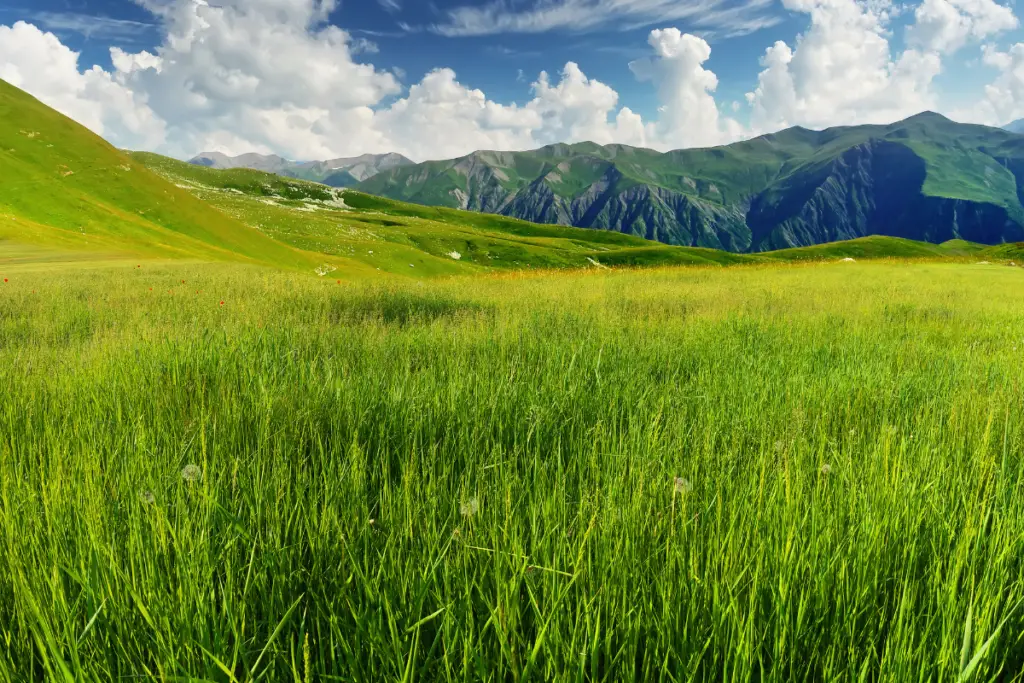Temperate zone grasslands are found throughout central North America, where they are also known as prairies, and in Eurasia, where they are known as steppes. Temperate grasslands have large annual temperature variations with hot summers and cold winters.
Annual temperature variations create specific growing seasons for plants. Plant growth is possible when temperatures are warm enough to support plant growth, which occurs in spring, summer, and fall. Annual rainfall ranges from 25.4 to 88.9 cm (10 to 35 inches).
Temperate grasslands have few trees except those growing along rivers or streams. The dominant vegetation usually consists of grasses. The treeless state is maintained by low rainfall, frequent fires, and grazing. The vegetation is very dense and the soils are fertile as the subsoil is full of roots and rhizomes (underground stems) of these grasses. Roots and rhizomes serve to anchor plants to the soil and replenish organic matter (humus) in the soil as they die and decompose.
The American bison (Bison bison), better known as the buffalo, is a grazing mammal that once roamed the American prairies in large numbers.
Dominant wildlife: predators such as coyotes and badgers – herbivores such as mule deer, pronghorn antelope, rabbits, prairie dogs, and introduced cattle; birds such as bobwhite, prairie chicken, mountain plover, hawks, owls; reptiles such as snakes; insects such as ants and grasshoppers.
Fires, which are a natural disturbance in temperate grasslands, can be started by lightning strikes. It also appears that the flash fire regime in North American grasslands was enhanced by intentional burning by humans. When fires are suppressed in temperate grasslands, vegetation eventually turns into thickets and dense forests. Often, the restoration or management of temperate grasslands requires the use of controlled burns to suppress the growth of trees and maintain the grasses

Erzsebet Frey (Eli Frey) is an ecologist and online entrepreneur with a Master of Science in Ecology from the University of Belgrade. Originally from Serbia, she has lived in Sri Lanka since 2017. Eli has worked internationally in countries like Oman, Brazil, Germany, and Sri Lanka. In 2018, she expanded into SEO and blogging, completing courses from UC Davis and Edinburgh. Eli has founded multiple websites focused on biology, ecology, environmental science, sustainable and simple living, and outdoor activities. She enjoys creating nature and simple living videos on YouTube and participates in speleology, diving, and hiking.

